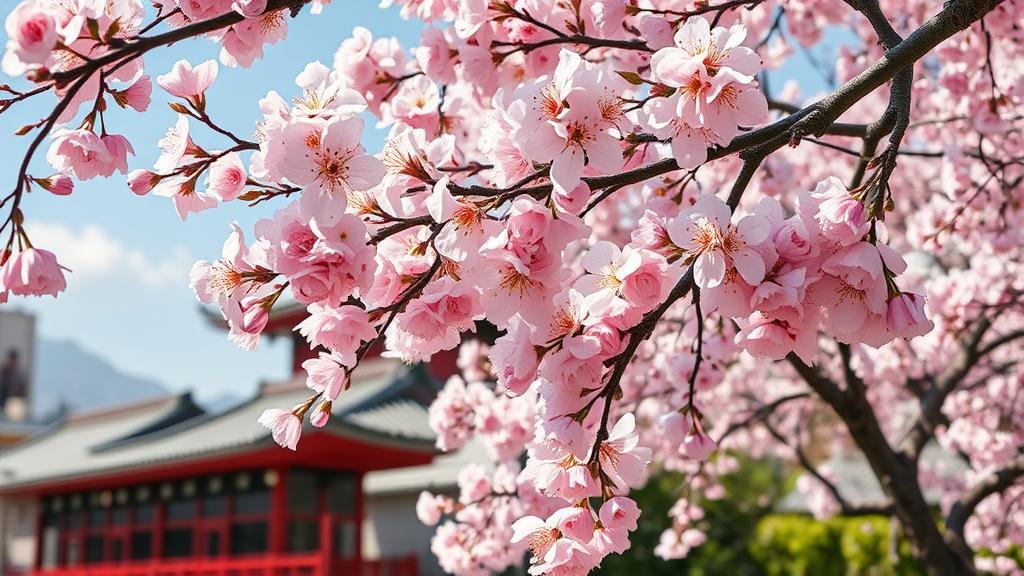Documenting the seasonal blooms of the cherry blossoms in Japan.
Documenting the Seasonal Blooms of the Cherry Blossoms in Japan
The cherry blossom season in Japan, known as sakura, is a breathtaking natural phenomenon that occurs annually, attracting millions of visitors and photographers from around the globe. This short-lived yet beautiful display typically takes place from late March to early April, depending on the climate of specific regions. Understanding the timeline, locations, and significance of these blossoms enhances the appreciation of this stunning spectacle.
The Timeline of Cherry Blossom Blooms
The sakuras bloom is highly dependent on the temperature, making it vital to monitor annual forecasts. Generally, the cherry blossoms start to bloom in the south and gradually move northward. Here is a general timeline:
- Mid-March: In cities like Fukuoka and Kumamoto, the cherry blossoms may begin to bloom.
- Late March: The blossoms typically reach full bloom in Tokyo and Osaka.
- Early April: The blooms are usually in full blossom in regions like Kyoto and Hiroshima.
- Mid to Late April: In areas further north, such as Hokkaido, blossoms begin to appear.
Statistically, the sakura typically blooms only for about one to two weeks, creating a fleeting window for those wishing to experience their beauty. Professional flower analyzers from the Japan Meteorological Corporation closely monitor these developments and provide updates each year.
Iconic Locations for Cherry Blossom Viewing
Japan is home to numerous renowned locations for cherry blossom viewing, known as hanami. Some of the most celebrated spots include:
- Ueno Park, Tokyo: Known for its over 1,000 cherry trees, Ueno Park has been a popular viewing spot since the late Edo period.
- Yoshino, Nara: This area has over 30,000 cherry trees, making it one of the most famous hanami locations in Japan.
- Hirosaki Castle, Aomori: The cherry blossoms framing this historic castle create a picturesque setting that draws thousands of tourists.
- Chidorigafuchi, Tokyo: This scenic moat surrounded by cherry trees offers stunning views of both the blossoms and the Imperial Palace.
Each of these locations provides unique characteristics, thus catering to different preferences, whether one prefers a crowded festival atmosphere or a serene natural setting.
Historical Significance of Cherry Blossoms in Japan
Cherry blossoms have a rich history in Japanese culture, dating back over a thousand years. Initially favored by the aristocracy during the Heian period (794-1185), they eventually became a symbol of life and ephemerality, appreciated by all social classes. The fleeting nature of the blossoms serves as a metaphor for the transient nature of life, a concept deeply embedded in Japanese philosophy.
The symbolism of sakura is seen across various media, including literature, art, and even national icons. For example, cherry blossoms are prominently featured in haiku poetry, often evoking emotions tied to nostalgia and beauty. Notably, the cherry blossom was adopted as a symbol of Japan’s resilience following World War II, promoted during the annual cherry blossom festivals that took place in cities like Washington, D.C.
Real-World Applications for Enthusiasts
For those wishing to document their cherry blossom experience, here are a few essential tips:
- Photography Techniques: Use a wide-angle lens to capture the ethereal scope of cherry blossom trees. Consider shooting at dawn or dusk for optimal lighting conditions.
- Journaling: Keep a travel journal documenting the dates and locations of your sightings, along with personal reflections and sketches.
- Social Media: Share your cherry blossom adventures on platforms like Instagram using hashtags such as #Sakura2023 or #Hanami to connect with other enthusiasts worldwide.
In essence, documenting the cherry blossoms in Japan is an immersive experience that goes beyond simple observation. With each bloom, people are reminded of both the beauty of nature and the cycle of life itself.
Conclusion
To wrap up, the seasonal blooms of cherry blossoms in Japan are a mesmerizing event that showcases natures beauty while holding deep cultural significance. By understanding their timeline, iconic locations, and historical context, individuals are better equipped to appreciate and document this extraordinary natural phenomenon.



